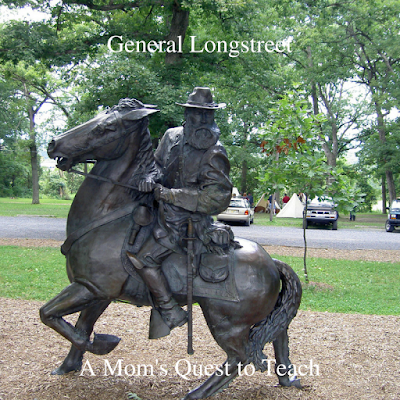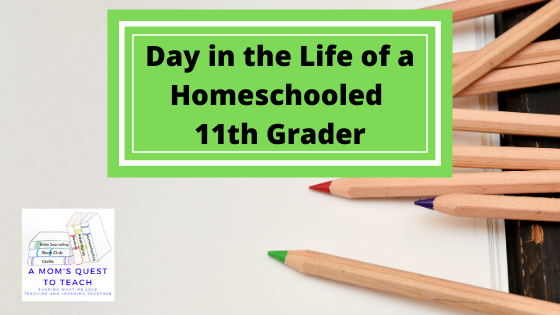Disclaimer: I received a FREE PDF copy of this book from the author in exchange for my honest opinion. I was not required to write a positive review nor was I compensated in any other way. This post contains affiliate links. For more information, please see my Terms of Use and Disclosure Policy page. Thank you.
I had the privilege of receiving a PDF of What God is Doing: Old Testament Object Lessons for Kids by Anne Marie Gosnell to review with our family. I have previously read and reviewed Helping Your Children Become Prayer Warriors and also enjoyed watching the explanation of Bible object lessons on the YouTube page, "Bible Object Lessons for Kids." I have wanted to try some of these with our own children. So, having access to the text of What God is Doing was a fantastic opportunity for me.
What Can You Find in What God is Doing?
There are 25 interactive lessons geared towards children ages 5 to 12 in What God is Doing: Old Testament Object Lessons for Kids. Anne Marie Gosnell wrote each lesson to take about 20-30 minutes with one main goal in mind: to show how God is bringing about His plan of salvation. From examining the experiences of Adam and Eve in Eden to Nehemiah building the wall, the main focus of this curriculum is the Old Testament as you may have already gathered from the subtitle (Old Testament Object Lessons for Kids). There are two lessons at the end of What God is Doing which address the time that elapsed between the Old and New Testaments (between Malachi and the birth of Jesus) which bring a nice conclusion to the book.
In addition to the 25 object lessons, there are a number of other chapters to help you get the most of What God is Doing. For example, there is an introduction, a chapter on how the book works with links to resource pages, tips and advice on how to become an excellent Bible teacher, and coloring pages for you and your children.
Each lesson contains the following elements:
- Scripture Focus
- Materials
- Geography
- Background
- The Object Lesson itself
- The Bible Lesson
- A Life Application
- A Comment Box for the teacher to answer the questions "What went well as you taught this lesson? What can you do better?"
How Did We Use What God is Doing: Old Testament Object Lessons for Kids?
During the time we were reviewing this thorough book, we took a look at a few lessons. Specifically, I would like to talk about our experiences with Lesson 7: Abraham's Challenge to Sacrifice Isaac and Lesson 9: Jacob Wrestles with God. As we have the PDF of the book, I printed out the pages necessary to read ahead of time as well as the black and white image that accompanies the lesson (for our children to color).
We actually took a look at Jacob Wrestles with God first because I knew that our daughter would really enjoy the focal point of the object lesson. In this lesson, we made oobleck. We have never made this before in our homeschool, so I knew this would be a memorable experience for them. Our daughter really enjoyed helping me prepare the oobleck while our son colored in the picture. This was really a wonderful piece to include in the lesson to teach about how we often have hard hearts when we encounter God (like the solid nature of the oobleck) but "in God's hand we become usable, flexible, and able to glorify God" (59).
 |
| Getting the materials together for the object lesson. |
 |
| The oobleck was hard when punched but soft if you rested your hand on it. |
The second lesson I would like to share is that of Abraham's Challenge to Sacrifice Isaac. The materials for this lesson were quite simple to gather: a small model or picture of a ram and several colors of construction paper. We read about the promise given to Abram and Sarai and their name changes, compared the story of Isaac to that of Jesus, and looked through the wordless picture book I created with the construction paper.
After we used some of the lessons from What God is Doing: Old Testament Object Lessons for Kids, we were able to tie it back into our son's language arts where we are reading excerpts from the Bible and writing sentences about them. We also were able to find videos of the stories we read to watch during lunchtime. So, the lessons in the book fit in perfectly with our homeschooling day.
What do I Think?
This is a tremendously well-organized book with lots of great information! This book would be good for homeschooling families or those who are Bible teachers or Sunday School teachers. There are lessons that require more than a couple of children but they can be easily adapted, if necessary.
There are resources available including video links for a few of the lessons and the posters are available to either purchase or download as individual posters. This is quite helpful when planning out the lesson.
I also like that in most cases the materials necessary for the lessons are quite easy to gather together. There are only a few that require a trip to the store—like if you don't have toy plastic insects for the lesson on the twelve spies and the wandering or the cornstarch needed for the lesson about Jacob wrestling with God.
I also like how Anne Marie Gosnell helps us teach our children difficult lessons from the Bible in simple ways, including ways to apply the information to their own lives. For example, in the lesson regarding Anointed King David, children learn about how God sees inside our heart. Even if the outside looks good, the inside might not be good. A chocolate candy box and a clear candy jar are used in the lesson and the life application portion reminds children that God can see through us just like we can see through the clear jar.
Finally, I especially liked how using the lessons from What God is Doing: Old Testament Object Lessons for Kids allowed our children to demonstrate the knowledge they had previously learned from homeschooling and Sunday School. When asking one of the questions from Abraham's Challenge to Sacrifice Issac ("What do we know about sheep and the Old Testament?"), my children were able to discuss how David protected sheep (from lions and bears) prior to his fighting Goliath. Our son also shared a modified version of the parable of The Lost Sheep—of how the shepherd goes after the one sheep that runs away. They also recalled a new version of a song they were learning about Father Abraham at Sunday School. All of these connections to homeschooling and church combined are why I can easily and enthusiastically recommend What God is Doing: Old Testament Object Lessons for Kids by Anne Marie Gosnell.

























